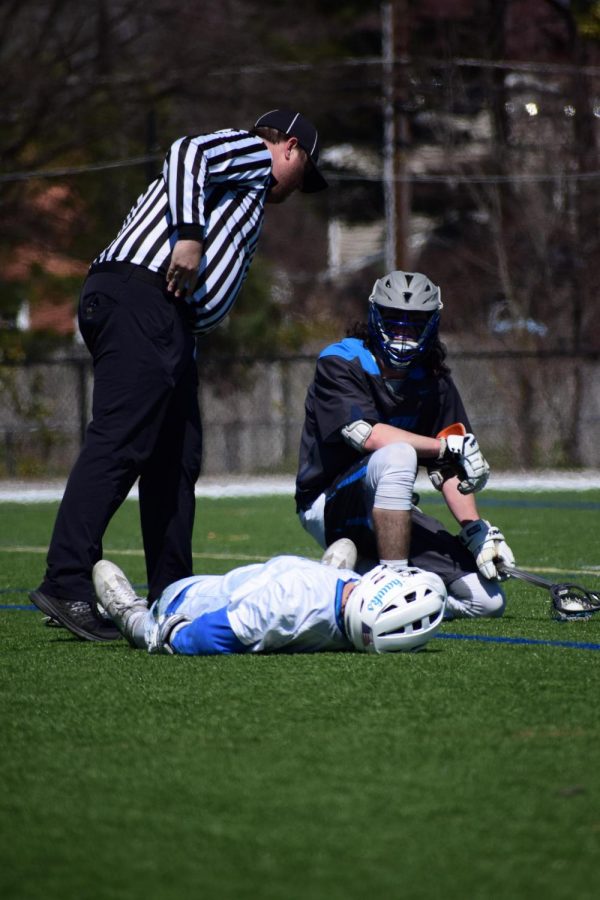Concussions total 19 in ’16-’18
Concussions mean down time for student athletes.
May 1, 2018
Student athletes who get concussions must sit out of games and avoid critical thinking until they recover.
According to athletic trainer Amber Kelso, eight AACC student athletes reported concussions in the 2016-2017 school year and 11 reported concussions in the 2017-2018 school year.
Men’s Lacrosse captain Dylan Morton, who said he got a concussion during a game last season against Onondaga Community College, reported feeling “lightheaded” afterward.
“When I received that concussion, I was hit helmet-to-helmet by the other player when scooping a ground ball, which was illegal by the other player,” Morton said. “I didn’t really know what was happening. I saw glimpses and blurs.”
Morton said he wasn’t cleared to play until two weeks after his concussion and missed two games and one week of school.
“I stayed in bed for a while with no bright lights around me,” Morton said. “Finally, when light didn’t hurt anymore, I made my way back to practice, then just wore a helmet and gloves, and then I was cleared to participate at 100 percent.”
First-year engineering student Gerald M. Maravanyika said he suffered a concussion in high school in December 2016.
“I was playing around with a friend and we were tossing the lacrosse ball around, and I was trying to catch the ball with one hand and impress some people,” said Maravanyika. “I ended up getting hit in the eye.”
Maravanyika said he had trouble moving his body after his injury.
“It was almost like you put a filter on a camera,” Maravanyika said. “It was kind of in-and-out … nothing looked the same.”
Kelso said head injuries that happen during games are dealt with immediately on the playing field to assess the neck and spine of the player and ensure that it is safe for them to move.
According to Kelso, trainers diagnose concussions by giving injured players lists of words and numbers to recite to test their memory.
Athletics Director Duane Herr said after a concussion, “the brain needs to be relaxed.”
Herr said the Athletics Department communicates with faculty about student absences due to concussions.
Women’s Lacrosse midfielder Madeline Szanyi said she suffered a concussion in fall 2016.
“I got hit in the ear, so the ringing in my ear didn’t go away,” Szanyi said. “I couldn’t focus on class. My head always hurt. I sat out [of games and practice] for a month and a half. I didn’t go to class for two days. And then I had to do a lot of low-cardio exercises.”
Men’s Lacrosse midfielder Charles Ellis reported multiple concussions from different sports.
“I’ve had three or four concussions,” Ellis said. “There’s a whole bunch of sensitivity to lights. Major migraines. … I was out for three weeks. … I couldn’t watch TV or read books, because it put too much in [my] mind.”












